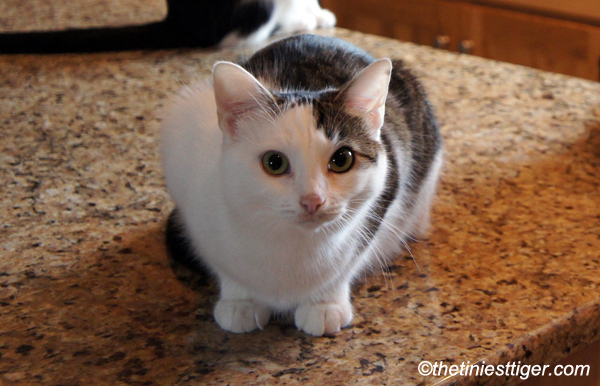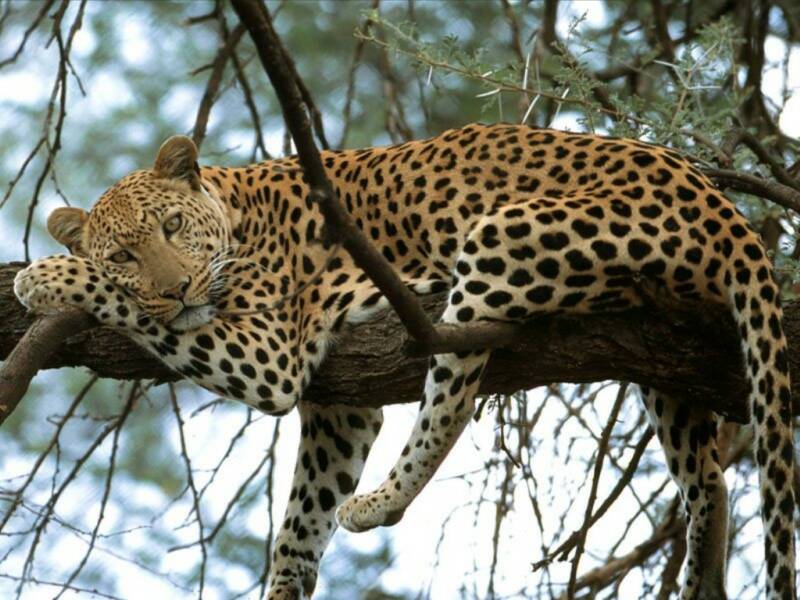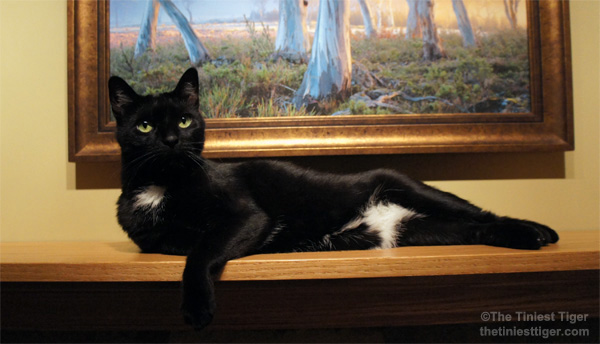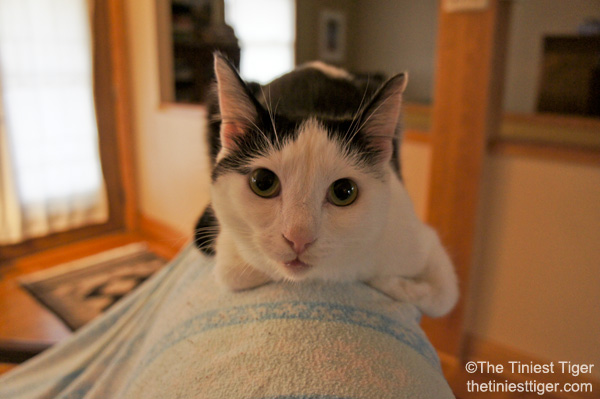
Your Cat’s Natural Instinct to Climb
Your cat has a natural instinct to climb. Of course, some cats climb more than others, but the desire to observe from an elevated perch is hardwired into your cat. She can’t help this desire; it is part of her true nature. Instead of being frustrated by your cat climbing your curtains, leaping up on your counters, or surfing the back of your sofa, take a moment to put yourself in your cat’s paws. Your cat needs to seek refuge in a higher location, so instead of fighting your cat’s natural instinct, indulge her.

Our housecats remain the most anatomic, metabolic and behavioral similar to their wildcat ancestors. This makes the domestic cat distinctly different than other companion animals. Even though cats now live within our homes, their nutritional, physical and emotional needs remain much the same as those of their wild cousins. Trying to force your cat to adapt to your lifestyle and preferences without understanding your cats deep-rooted needs can lead to what you might interpret as your cat’s behavior problems. But more often than not, the cat is not at fault.

Your Cat Thinks like THeir Leopard Cousins
Cats are both predator and prey in the wild, and your indoor cat has not forgotten this. In the wild, cats know that at any time they could fall victim to one of their predators. For this reason, cats need to take refuge in high places to both stay safe and to watch for potential prey. The leopard is the most adept of all cats at climbing trees. The spotted cat has a unique locking wrist and their scapula is attached to their muscles enabling them to seek safety in the treetops.
Even though your house cat might not be as proficient at climbing as their cousin the leopard, your cat is always on the lookout for a safe place to sleep and observe her surroundings. Your cat needs to be able to spend time up off the ground. Remember, your cat is much smaller, but she thinks very much like the larger leopard. If she doesn’t have access to a cat tree, shelving, or even the top of a dresser, she might attempt to climb the curtains or jump up and lounge on your kitchen counters.
How You can Satisfy your cat’s natural instinct to climb
It is fairly simple to indulge your cat’s desires once you understand her needs. You can provide your cat with a higher vantage point by getter her a cat tree. Cat trees today come in all shape, sizes and price ranges. The most important feature of the cat tree is height and a safe way for your cat to climb to the top. If you can place this cat tree by a window that overlooks a yard with birds, even better.
If you are not able to accommodate a cat tree, you can clear off a desk, dresser, bookshelf or table near a window and simply fold up a soft blanket creating a perfect resting place for your cat. With three cats in our house, we needed to create multiple locations for Annie, Eddie and Mercy to reach higher ground. We have a cat tower in our sunroom, which is a favorite place for both Annie and Eddie. In fact, they have been observed wrestling each other for the top platform. Eventually, both cats share the top level and curl up for a nap.

simple solutions to satisfy your cat’s Desire to Climb
We cleared off our mantel to allow Mercy to lounge above it all in our living room. Mercy is older than Annie and Eddie so they are far more active and playful than Mercy. Even though Mercy enjoys a good game of tag and wild runs through the house, he needs his alone time. The mantel provides a respite for him from the dynamic duo. Best of all, Mercy can keep an eye on Annie and Eddie’s whereabouts from his mantel perch, enabling him to feel safe and in control of his surroundings.
You won’t need to purchase special items to indulge your cat’s need to climb. A chair with a folded blanket can also do the trick. For instance, we throw blankets over most of our furniture and Eddie has taken to perching on the top of the back of one of the chairs that looks towards the side door. This is the door we use to enter and exit the house so I think Eddie likes to keep watch on that door. When I see him on the back of this chair draped with a white blanket, I call him our little snow leopard.

redirect undesired behavior by providing alternatives
We have a half wall that surrounds the stairs leading to the lower level man cave. This is an ideal location for the cats to stalk but not a preferred place because of the fear they will fall. We have redirected Eddie and Mercy from this location but Annie is proving a little tougher. When the cats are running and chasing each other around the house, Annie can’t resist her natural instinct to climb up on this ledge. When she is particularly wild, Paul puts her in a time out by closing her in the bedroom. Then after a few minutes, she emerges and steers clear of the ledge. Lately, when Annie is caught on the ledge, all we have to say sternly is “Annie down.” and she voluntarily puts herself in a time out by marching into the bedroom. Sometimes it is hard not to laugh.
To counteract Annie’s desire to use the ledge around the stairs as a runway, we placed a chair with a high back nearby and cleared off the top of a hutch about the same height as the ledge across the hall. Now this upper level highway is a favorite route to the sunroom.
If you’ve ever wondered why your cat chooses to lay even on a single piece of paper instead of directly on the floor, it is believed the perception of the paper on the floor allows your cat to be higher than her surroundings. All cats have the natural instinct to climb. As their guardians we should indulge them. As a result, your cat will be happier and so will you.